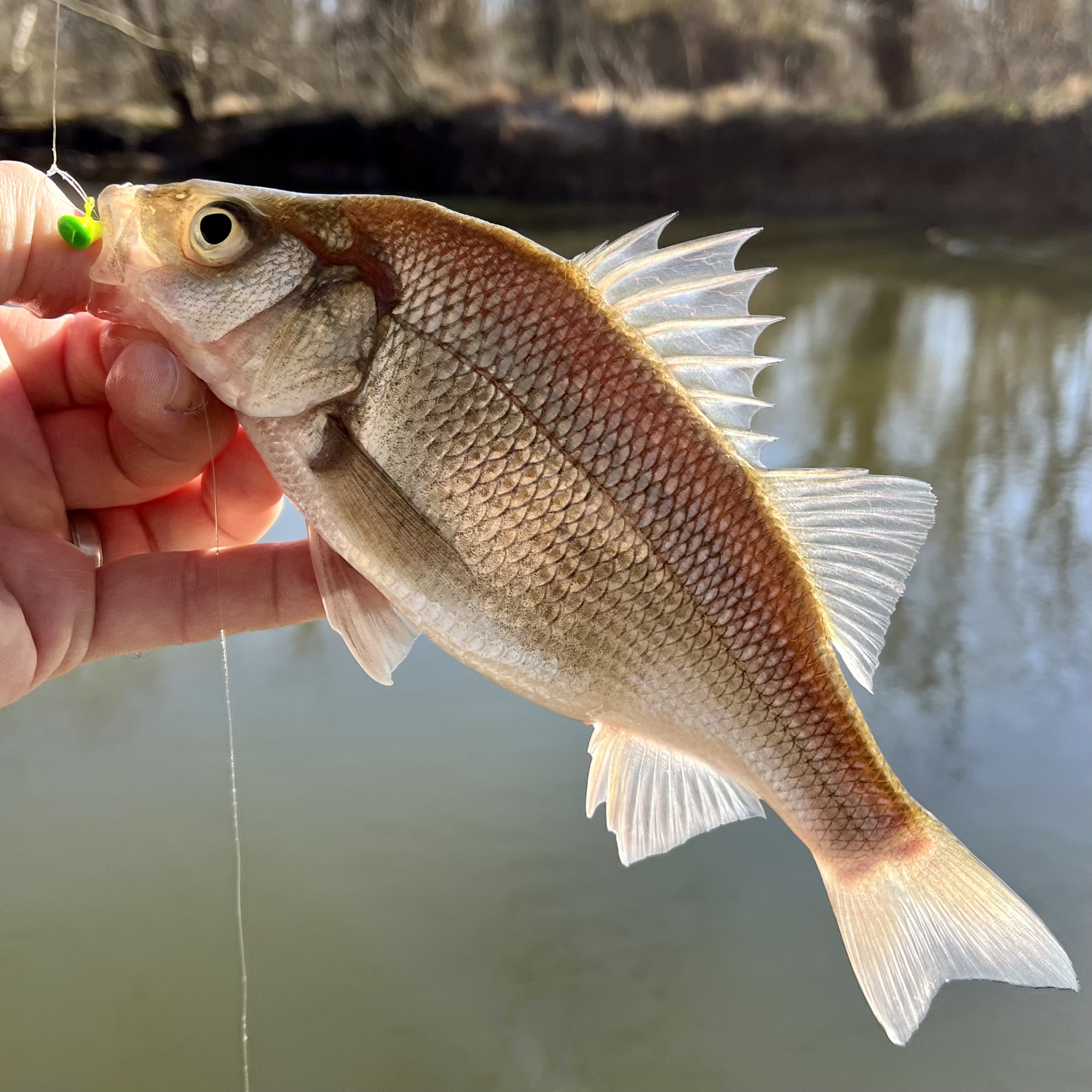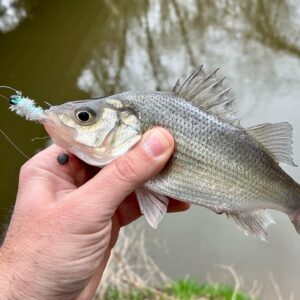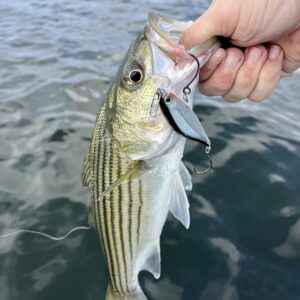Where ‘o where to fish for the Spring run? And which run to fish for? These are two questions that preoccupied my planning for a quick trip to a local riverbank this week. The yellow perch, white perch, and shad runs have been in full swing, to varying degrees, within the Chesapeake’s many mid-bay tribs. And there are a few spots that can run hot on any given day. Or cold. The trick is to intercept the fish as they make way north into the headwaters…or south if they’re returning to deeper water post-spawn.
My take: For a gorgeous Spring morning—the first full day of Spring—I opted to head to a spot that’s southernmost from my home, but within a shortish drive (1/2 hour) for a pre-work outing. I decided to bypass what could have been productive spots along the way, in favor of the opportunity to hook into early-season shad…if, indeed, they were actually running yet. Downriver I went, to Queen Anne Bridge on the Patuxent River. Looking at last year’s notes—where and when I began catching shad—it would still be a bit early for the shad run there, but with a mild winter on our heels, it was possible the first fish could be passing through. White perch would definitely be in the mix according to my logs.
The plan was quite simple. Take my 6′ light, spinning rod/reel combo with a 5′ leader of flourocarbon (8# test) tied to the braid mainline (10#), and plenty of tandem shad rigs for the business end. I pre-tie the rigs with a 1/16oz shad dart on top of various colors (chartruese, lime, silver, yellow, black) and a gold or silver 1/16oz spoon on the bottom. Some folks choose darts and/or spoons of slightly heavier or lighter weights, but for the shallower water of the Patuxent location I’d be fishing (4 to 10′ depths), the 1/16oz lures cast well together, flutter in the current, can be worked easily at various depths, or allowed to tick bottom on the retrieve, just enough to either catch fish or hang up (and yes, you will lose some tackle in the Pax).
If you’re lucky enough to fish, you’re lucky enough…as the saying goes. But, you’re especially lucky if you’re (1) able to angle in the early morning hours during the work week because (2) you’ll often be the only soul on site. Such was the case when I pulled into the small, gravel parking area footsteps away from the riverbank. I had the place to myself, which makes for relaxed casting. The sun poked at the treetops and put just enough light on the water to “sun up” the near bank and shadow the far. Because the region had gone several days without precipitation, the river flow/current was steady but subdued—throw a lure upstream and the drift would take it downstream with a gentle pull. Perfect for the tandem rigs.
I worked the water below the bridge, then ahead. The trick is finding the pocket where fish are holding. The water surface was pretty calm overall. If shad were present, it’s likely they’d show themselves along the edges of the bank, darting and fluttering in spawn mode. But no sign of that. The shad hadn’t run this far up the Patuxent, yet.

The good news—white perch showed themselves. And they love a tandem rig as much as the shad. It’s a foolproof set up to catch a couple species. If one is absent, but another is active, there’s a great chance to connect with fish. Such was the case when the first fish of the morning hit—a chunky 9″ perch. Next cast, another. And within the next 1/2 hour, about 10 fish—ranging in size from 7 to 10″—connected with either the shad dart or spoon. They showed preference for chartruese, gold, and silver. Black went ignored. It was sunny after all, and dark lures are better saved for overcast days. Of note, the hits came in the shaded patches of water. Perch tend to congregate in shade.
For a quick morning of riverbank casting the action was good, which is all one can ask for when chasing “the spring run,” no matter the species. The shad will swim up to this spot, among many more along the Patuxent River, within the next several weeks. And the only way to catch them is to keep trying when time and circumstance allow. See y’all on the water again, real soon!






